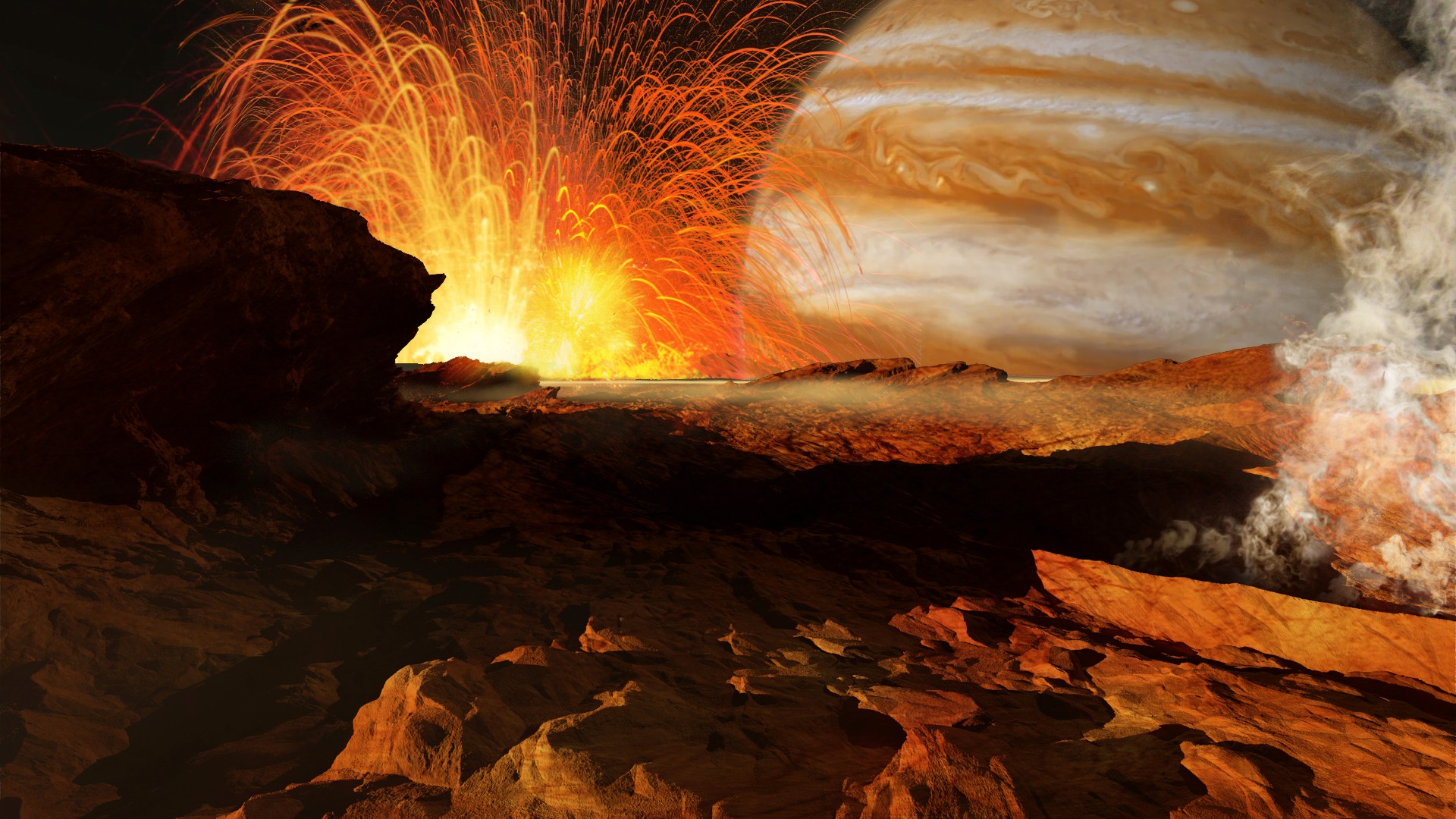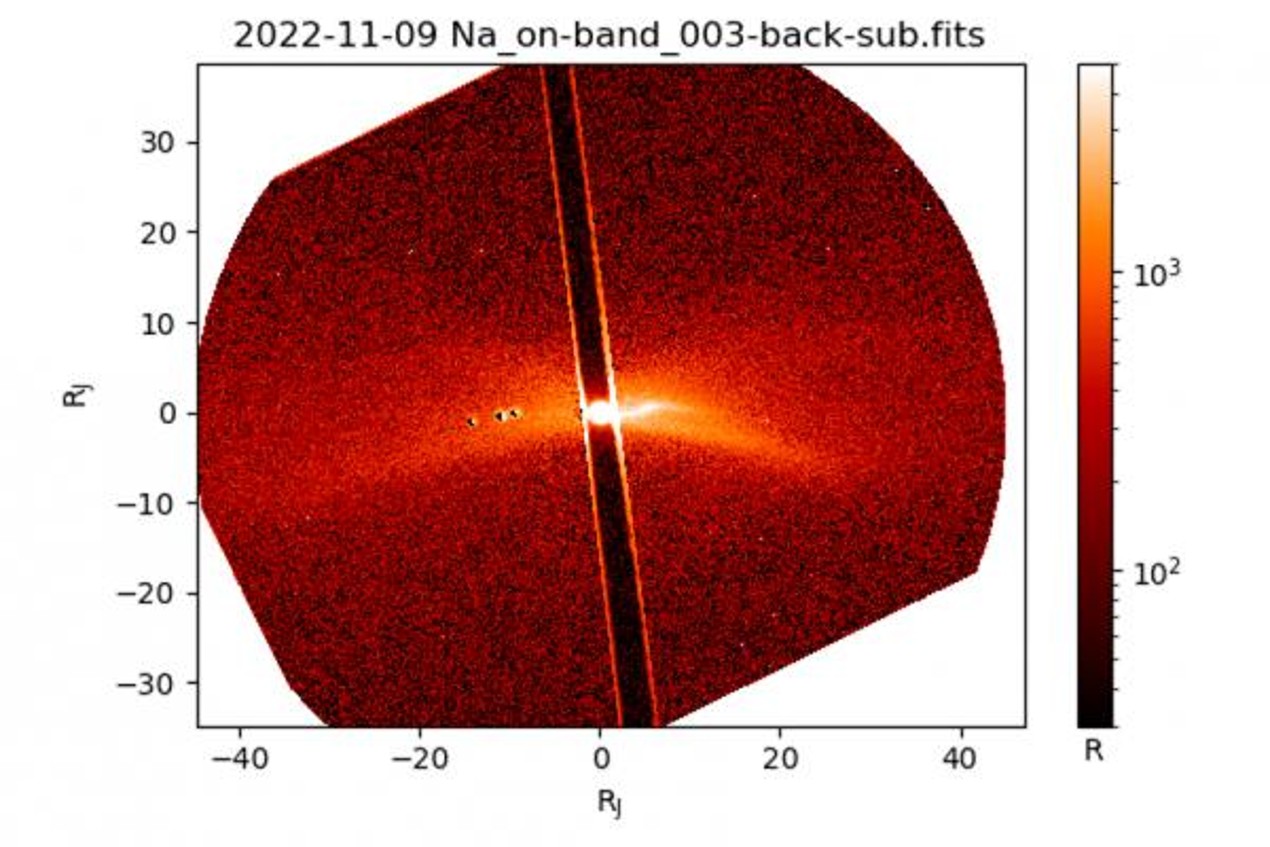Massive, months-long volcanic eruption roils Jupiter's moon Io
The most volcanic body in the solar system, Io produces outbursts every year with one the largest occurring in Fall 2022.

A massive volcanic eruption has been spotted emerging from Jupiter's moon Io. The eruption was observed in the Fall of 2022 using the Io Input/Output observatory (IoIO) by Planetary Science Institute (PSI) senior scientist Jeff Morgenthaler.
One of Jupiter's largest moons, Io is considered to be the solar system's most volcanic body with its extreme conditions and yearly outbursts of volcanism caused by the tremendous gravitational influence of its parent planet.
The gravity of Jupiter, the solar system's most massive planet, and that of two of the other large Jovian moons create powerful tidal forces within Io. This stretches and squeezes Io, the innermost of the four large Jovian moons, giving rise to violent volcanic activity.
Related: Io: A guide to Jupiter's volcanic moon
The PSI-operated IoIO is located near Benson, Arizona, and has been observing monitor volcanic activity on Io since 2017. Using a coronagraphic technique that dims the light coming from Jupiter the instrument is able to image faint gases near the gas giant.
This allowed Morgenthaler to spot the brightening of both sodium in a cloud or "nebula" around Jupiter which began between July and September 2022 and ended just last month.
Ionized sulfur which surrounds Jupiter in a donut-like structure and is referred to as the Io plasma torus also brightened during the Fall of 2022. This was less pronounced however than the brightening of the Io plasma torus seen during previous outbursts.
Get the Space.com Newsletter
Breaking space news, the latest updates on rocket launches, skywatching events and more!

"This could be telling us something about the composition of the volcanic activity that produced the outburst or it could be telling us that the torus is more efficient at ridding itself of material when more material is thrown into it," Morgenthaler said in a statement.
The IoIO observations could be followed up by NASA's Juno spacecraft which has been orbiting the gas giant since 2016. Juno is set for a close flyby of Io in December 2023 and its instruments are sensitive to plasma around Jupiter.
This plasma can be traced back to Io's volcanic activity, meaning that Juno could tell astronomers if the volcanic outburst of Fall 2022 had a different chemical makeup than other Io eruptions.
Before Juno can get close enough for such an investigation, however, Morgenthaler is hoping more versions of IoIO could be up and running across the globe.
"One of the exciting things about these observations is that they can be reproduced by almost any small college or ambitious amateur astronomer. Almost all of the parts used to build IoIO are available at a high-end camera shop or telescope store," Morgenthaler said. "It would be great to see another IoIO come online before Juno gets to Jupiter next December."
These additional IoIO copies in different global locations could help astronomers continue monitoring the Jovian moon from Earth during gaps enforced by unfavorable weather conditions. More IoIO units could also provide more time to cover Jupiter's highly dynamic Io plasma torus and sodium nebula.
In addition to studies of Jupiter and the elements surrounding it, IoIO is observing the sodium "tail" that follows Mercury and planets outside the solar system, exoplanets, as they transit the face of their stars.
Follow us on Twitter @Spacedotcom or on Facebook.
Join our Space Forums to keep talking space on the latest missions, night sky and more! And if you have a news tip, correction or comment, let us know at: community@space.com.

Robert Lea is a science journalist in the U.K. whose articles have been published in Physics World, New Scientist, Astronomy Magazine, All About Space, Newsweek and ZME Science. He also writes about science communication for Elsevier and the European Journal of Physics. Rob holds a bachelor of science degree in physics and astronomy from the U.K.’s Open University. Follow him on Twitter @sciencef1rst.
-
skynr13 It would be nice if this article had a link to Morgenthaler's IoIO simple design of this detector so his hopes of more versions of IoIO could be produced by people across the globe. If it's so simple I know many people would make one especially for his science project.Reply









